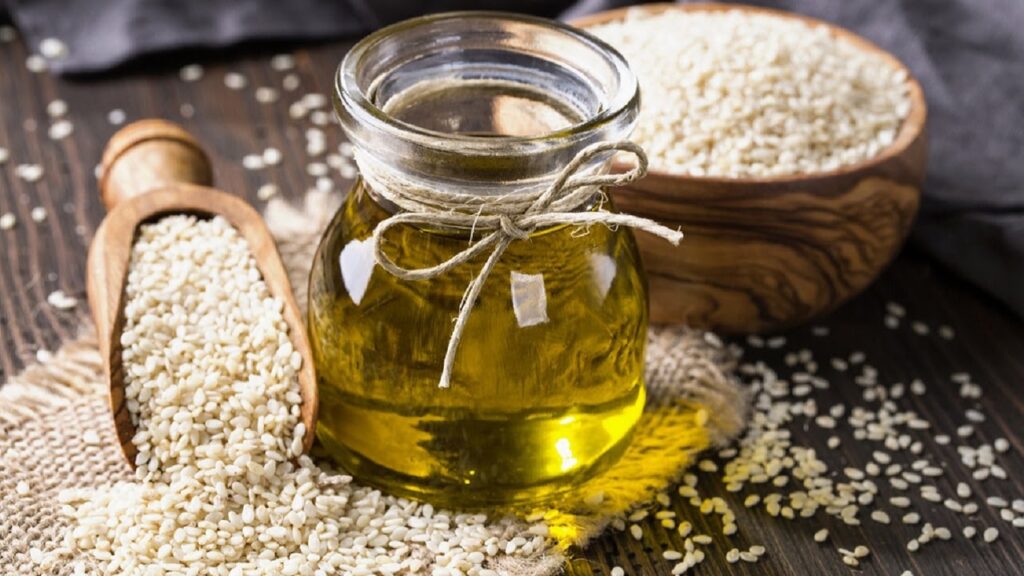Introduction: A Surprising Fact About Sesame Oil
Did you know sesame oil is one of the world’s oldest cooking oils, and that its history spans over 5,000 years? Sesame oil is not only praised for its unique flavor and many health benefits, it is also one of the most versatile oils, utilizing in everything from stir-fries to dressings. You might have a bottle of sesame oil tucked away in your pantry or fridge, but what happens to it after months, or even years? Does sesame oil go bad?
And if you’ve ever wondered if that bottle of sesame oil you bought three months ago is still OK to use, you’re not alone! It’s a question that comes up often among home cooks and chefs alike, and also among cooks of all kinds who like to incorporate flavored oils into their dishes. After all, you don’t want to have expired oil that could ruin the taste of your food or even make you sick. The bright side is that sesame oil is quite shelf-stable, and with the right storage tips, you can keep it fresh and safe to use in your recipes.
This article is going to discuss everything there is to know regarding sesame oil shelf life, its proper storage, signs of spoilage, and so on. So, whether you are a top-notch cook or a home-based ingredient experimenter, learning how to preserve the quality of sesame oil will help you a lot in your journeys in the kitchen. Let’s get started!
What is Sesame Oil?
But before we talk about how long sesame oil lasts or how to store it, it is better to understand what sesame oil actually is and why it’s so popular to cook with.
Sesame oil is a vegetable oil derived from sesame seeds, small, flat, oval-shaped seeds from the sesame plant (Sesamum indicum). About Sesame Oil — An oil that is among the oldest, sesame oil comes from the Middle East, India, and Africa. It is especially popular in Asian cooking because of the flavor it lends, rich and nutty. Sesame oil is of two main varieties: light sesame oil and dark sesame oil.
- Light sesame oil is generally refined, meaning it has been processed through methods like bleaching and deodorizing, giving it a neutral flavor. This variety is best suited for high-heat cooking techniques, like stir-frying and sautéing. It is used in many dishes, as it is a versatile ingredient.
- Dark sesame oil is made from toasted sesame seeds. This oil is darker in color and has a stronger, more intense taste. It is typically used to flavor and drizzle on top of dishes, in dressings and marinades, or as a finishing oil in preparations such as soups and salads.
Both types of sesame oil are packed with beneficial nutrients, including antioxidants, vitamins and healthy fats. These characteristics of sesame oil result in a long life, but if you want your sesame oil to remain fresh, it’s important to know how to store sesame oil.

How Long Can the Sesame Oil Last?
Sesame oil has quite a long shelf life compared to many other oils, though it can go bad like any food product. How long sesame oil lasts is determined by whether the bottle is opened or still sealed, and the variety of sesame oil. Let’s break it down:
Unopened Sesame Oil
And unopened sesame oil last longer than opened sesame oil, especially if you store it properly. Once opened, a bottle of sesame oil will usually keep for anywhere between 1 to 3 years after the expiration date. We Dewey leave a lot of unnecessary bottles behind each year, knowing that oil expires. The expiration date is typically printed on the bottle, but remember that it’s an estimate based on the oil’s production and testing. Unopened sesame oil will last well past its printed date if you store it in a cool, dark location, although the oil will lose some flavor and its nutritional value over the months and years to come.
Opened Sesame Oil
Once sesame oil is opened, its shelf life decreases. Typically, light sesame oil will be at its best quality for 6 to 12 months after the date of opening, as will dark sesame oil, as its flavor can be very complex and should be consumed within the 3 to 6-month region once opened. The longer it’s exposed to air, light, and heat, the more quickly it can spoil and lose its flavor and quality. Refrigerating opened sesame oil will add on to its shelf life; however, note that refrigeration will change the texture and look of the oil. It might get thicker and cloudier, but that doesn’t mean it’s spoiled — it just needs to warm up before you use it.
How to Keep Sesame Oil Fresh for the Longest Time
Proper storage is the key to keeping your sesame oil good for as long as possible. Proper storage limits exposure to elements like air, heat and light that quicken spoilage. Follow these storage tips to keep sesame oil flavorful and fresh:
1. Store in a Cool, Dark Place
One of the main elements responsible for sesame oil going bad is light and heat. Sunlight can cause oxidation, which decomposes the oil’s good properties and can make it taste bad. This is why it’s important to keep sesame oil in a cool, dark area like a cupboard or pantry — away from the stove or oven. Store sesame oil in a cool, dark place: Direct sunlight can alter the flavor of sesame oil and even make it rancid before you have a chance to use it.
2. Seal the Bottle Tightly
Always ensure that the bottle is tightly sealed after each use to prolong the freshness of sesame oil. When oil is exposed to air, oxidation can occur, resulting in off-flavors and a reduced shelf life. It only takes the simple step of ensuring the cap is tightly closed to greatly extend the life of your sesame oil.
3. Refrigerate After Opening
If you don’t expect to use sesame oil quickly, you might want to keep it in the refrigerator after it’s opened. Refrigeration can also help prolong its life, especially dark sesame oil, which has a more intricate and delicate flavor. While refrigeration may thicken the oil and cause it to cloud, this is an expected response and does not compromise the oil’s functionality. All you have to do is bring the oil to room temperature before using.
4. Avoid Storing Near the Stove
Most of us keep cooking oils handy, often near our stove or oven for easy access. Sesame oil is not ideal for storing near heat sources. Heat hastens oil’s degradation, so keep sesame oil away from direct heat or shifting temperatures. Sesame oil should be stored in a cupboard or cabinet away from the stove.

Signs That Your Sesame Oil Has Gone Bad
Even with proper sesame oil storage, there will inevitably come a time when it’s just not at its best anymore. It’s important to learn about the signs of old sesame oil so you don’t accidentally incorporate rancid oil into your cooking. The key signs that sesame oil is bad are:
1. Unpleasant or Sour Smell
Fresh sesame oil has a light, nutty fragrance, which only adds to its allure. If, however, the oil has gone rancid, it will take on an unpleasant or sour scent. The smell indicates the oil has oxidized and should not be used. If it smells bad or strange, toss it out.
2. Bitter or Sour Taste
If the oil smells good, but you’re still unclear, you may take a quick taste. Fresh sesame oil has an agreeable, mildly nutty flavor. Another indicator that oil has gone bad is if the oil tastes bitter, sour or rancid.
3. Cloudiness or Separation
Sesame oil occasionally will cloud up, particularly if it’s been refrigerated. But cloudiness that remains at room temperature, or oil that has a greasy or sticky or slimey feel, might mean the oil has spoiled. This is even more the case in the case of oil kept for a long time after opening.
4. Expiration Date Has Passed
It’s still best to look for the expiration date on the bottle before using sesame oil, even if it looks fine. Oils will usually be decent a few months past the expiration date (assuming it’s being stored correctly), which means monitoring how long your sesame oil’s been loitering about. If the oil has expired and exhibits other signs of spoilage it is better to throw it away.
Does Sesame Oil Go Bad? The Bottom Line
Yes, sesame oil goes bad, but it has a long shelf life, if you keep it well. Unopened sesame oil: 1–3 years: opened sesame oil: 3–12 months depending on the type Sunlight sesame oil, tends to go bad quickly, but both can last for quite some time if properly taken care of.
To ensure the longest possible life of sesame oil, store it in a cool dark place, tightly seal the bottle every time you use it, and refrigerate it if needed. Following these rules will guarantee that your sesame oil is fresh, and ready to take your favorite meals to the next level.
Click on the link for more interesting articles: https://foodcravelab.com/blog/
Key Takeaways
- Shelf Life: Unopened sesame oil, 1 to 3 years; opened sesame oil, 3 to 12 months, depending on the type (light or dark).
- Storage: Store sesame oil in a cool, dark cupboard and keep the cap tightly sealed to preserve its freshness. It can also store well in the fridge to extend its shelf life.
- Check for an off smell: bitterness of taste, or clumped texture, to know whether sesame oil is spoiled or not.
Frequently Asked Questions (FAQ)
1. How do I know if my sesame oil has gone bad?
The simplest is to smell and taste the oil. If it smells sour or tastes bitter, it’s not good to use anymore.
2. Is it possible to keep sesame oil inside the fridge?
With dark sesame oil, yes, refrigerating the oil can help improve its shelf life. It may become cloudy or thicken, but it’s still fine to use.
3. Does sesame oil have a shelf life?
Yes, sesame oil does have a shelf life. Unopened sesame oil has a shelf life of 1 to 3 years, while opened sesame oil is 3 to 12 months.
4. What’s the difference between light and dark sesame oil?
Light sesame oil is neutral and refined, while dark sesame oil is made from toasted sesame seeds and has an intense, nutty flavor.
5. Can I use expired sesame oil?
Avoid using expired sesame oil if it shows signs of spoilage, such as an unusual texture, bitter taste, or sour smell.
6. How can I extend the shelf life of sesame oil?
Keep sesame oil in a cool, dark location, make sure the cap is twisted tightly shut, and refrigerate to increase freshness.
Final Thoughts: The Oil That Doesn’t Go Out Of Style
Sesame oil is an ancient oil with a multitude of benefits, so it should be treated as a treasured kitchen pantry staple. Knowing how to store it well and what to look for when it goes bad will help you enjoy its sweet, nutty taste for months and even years. Whether you’re making a stir-fry or a dressing or drizzling it over your favorite things, you’ll always know how to best use your sesame oil.



